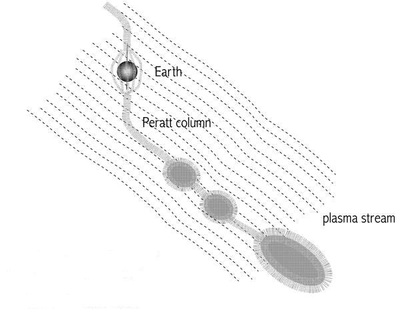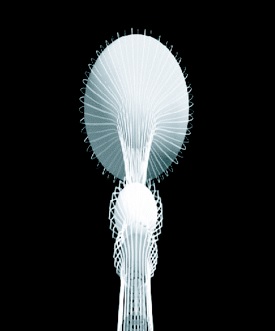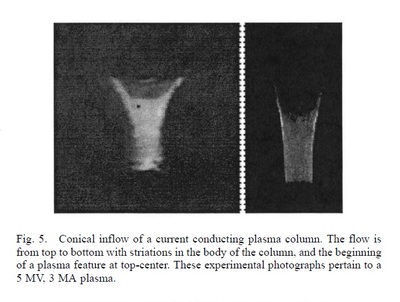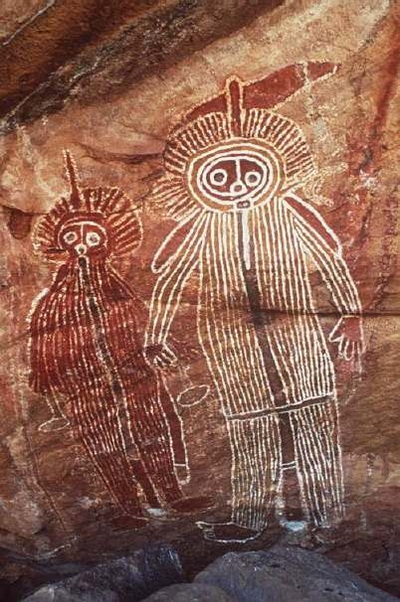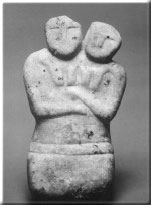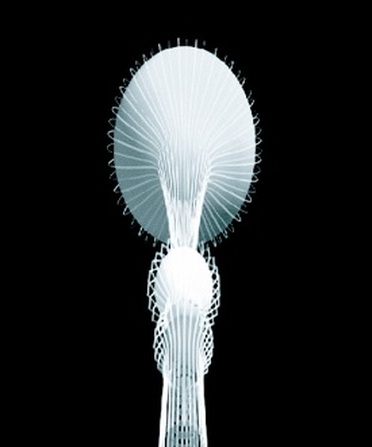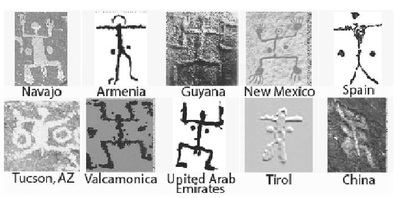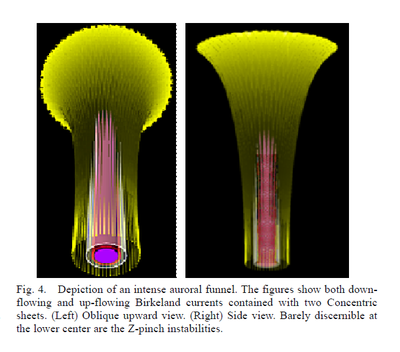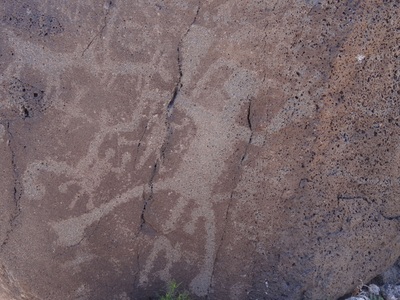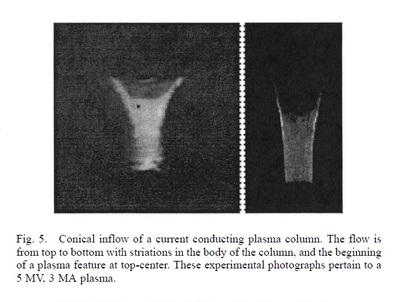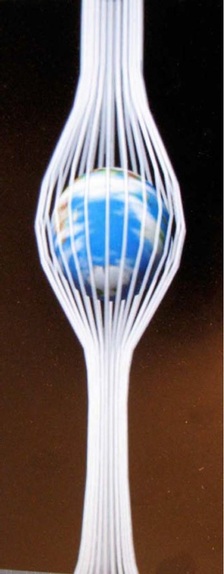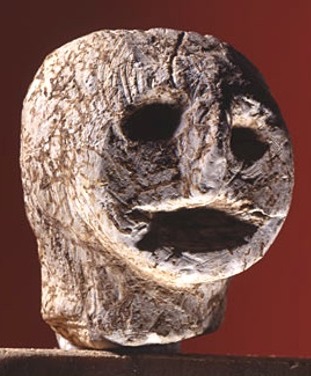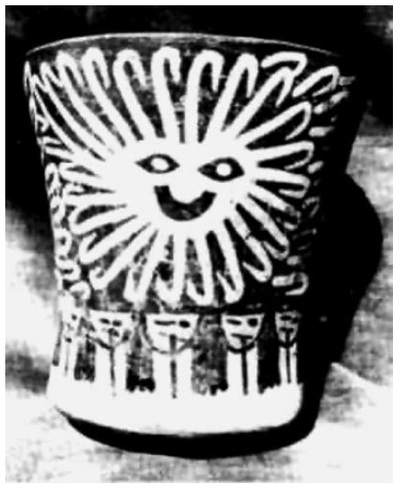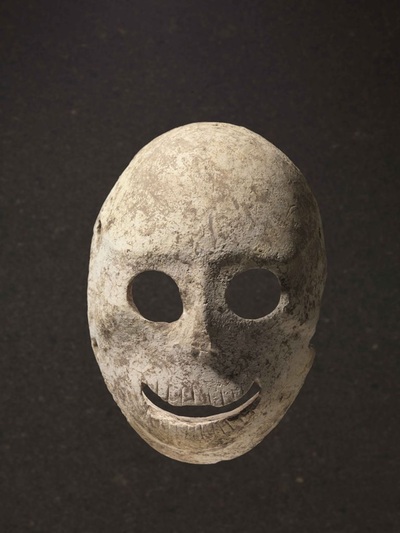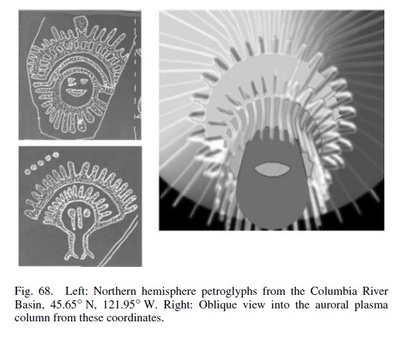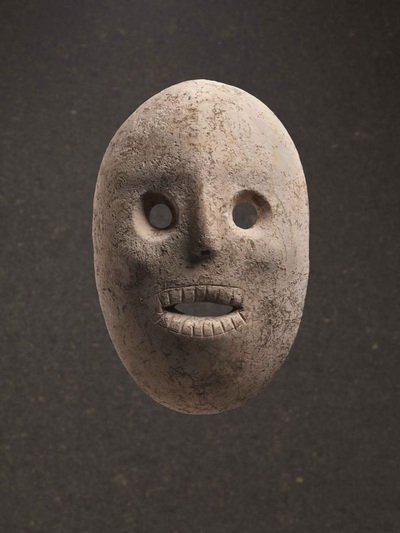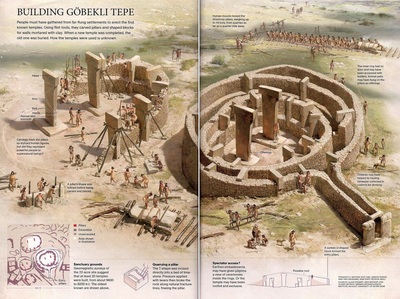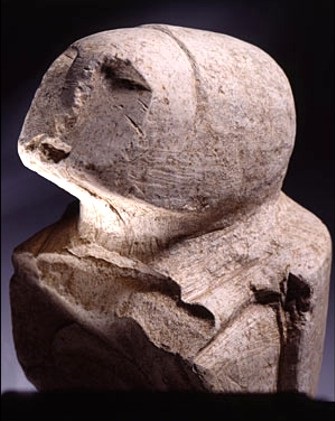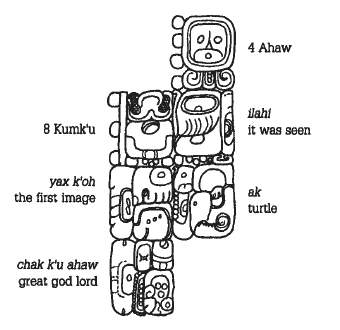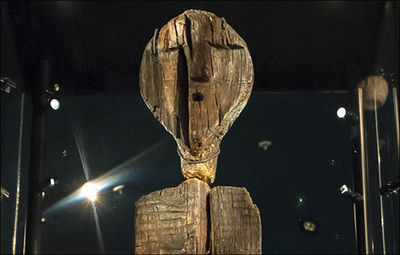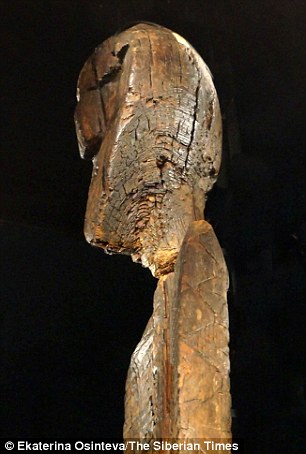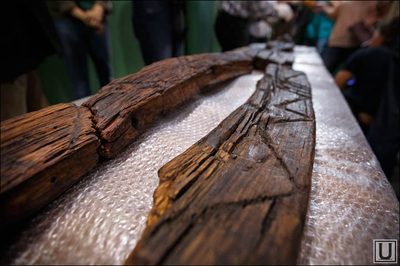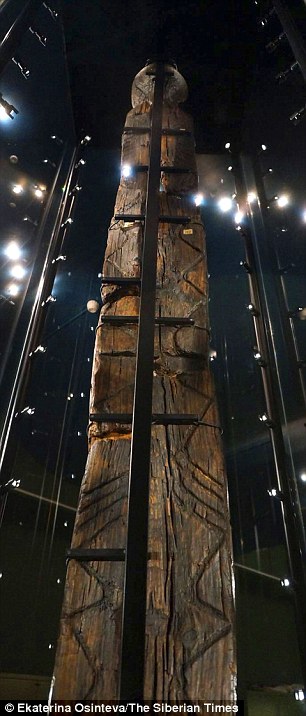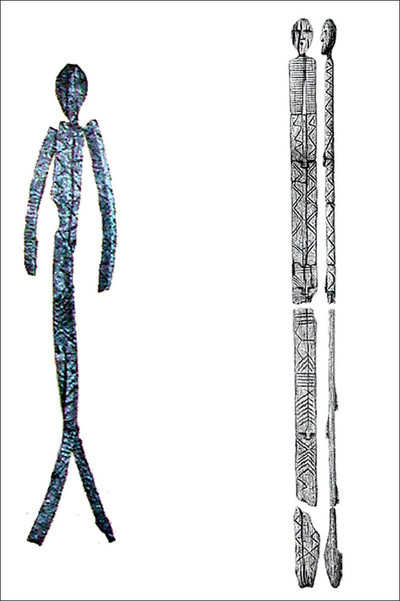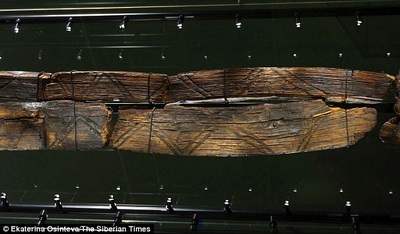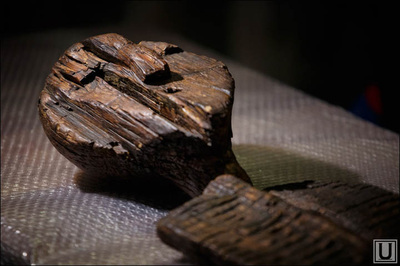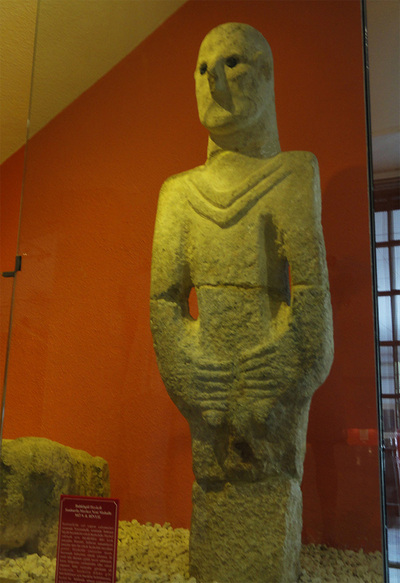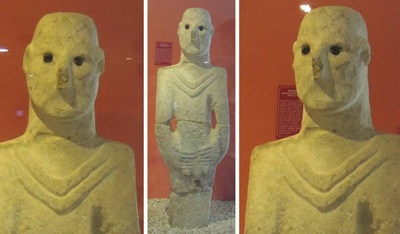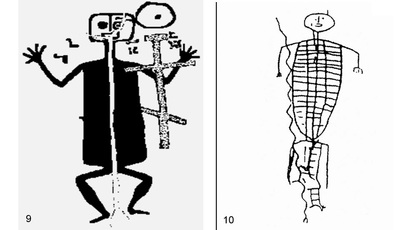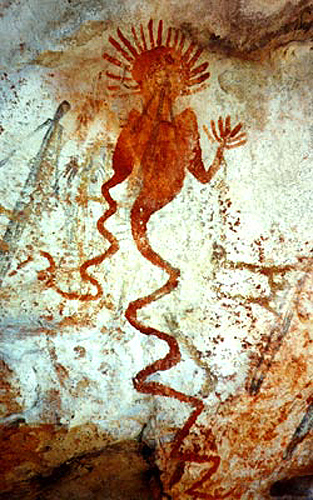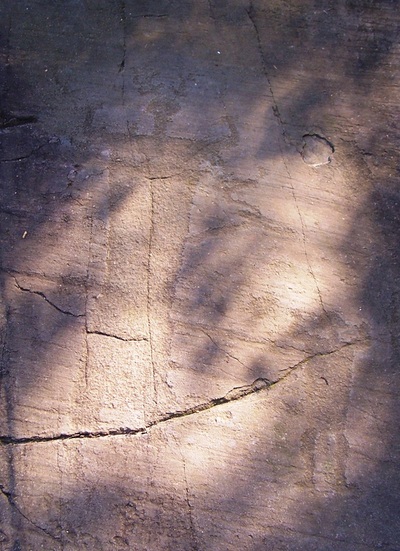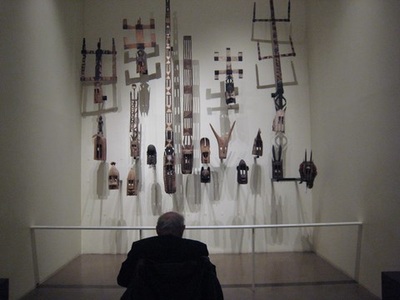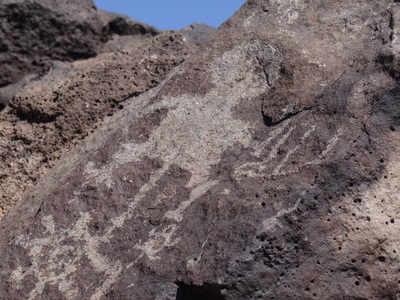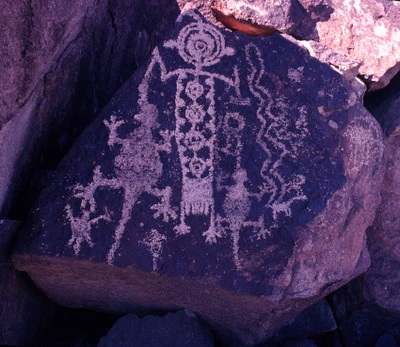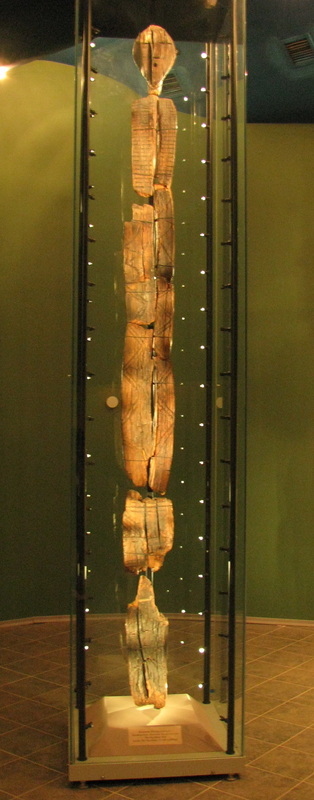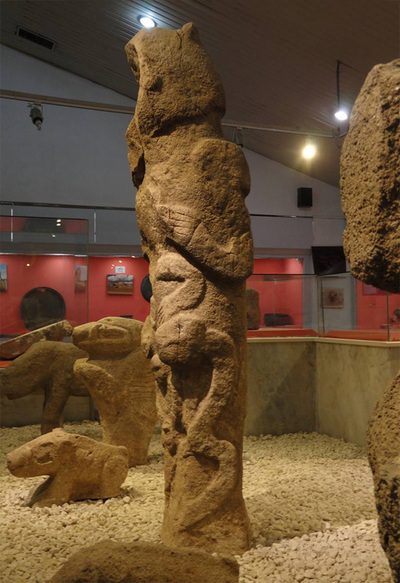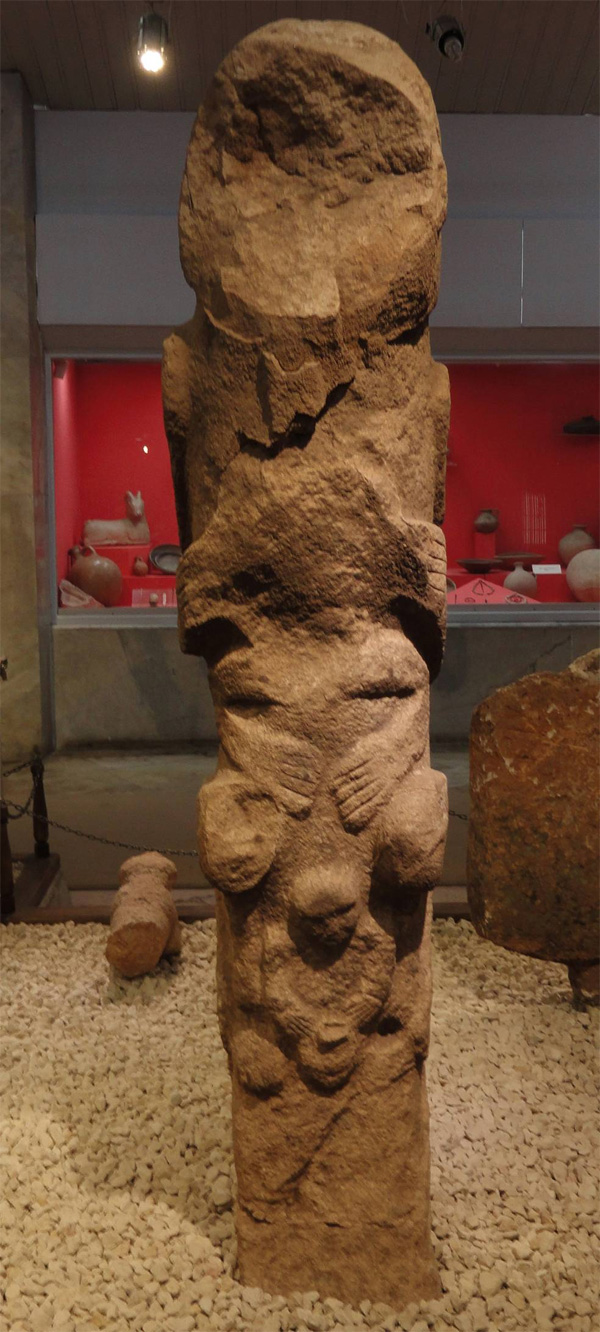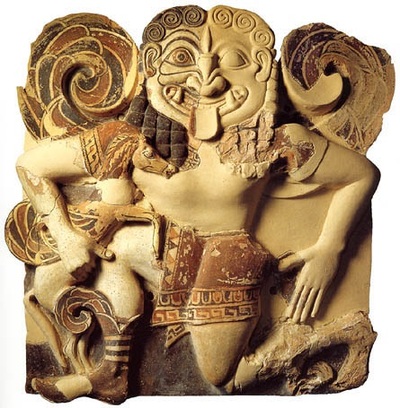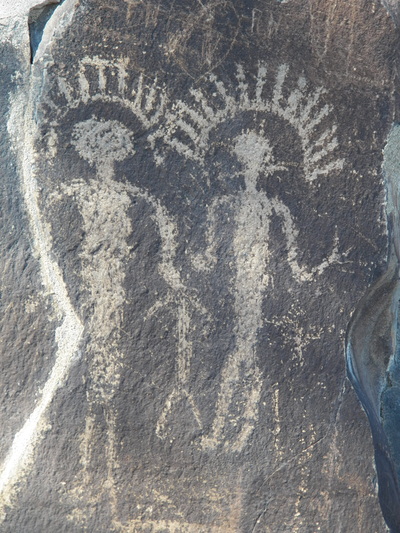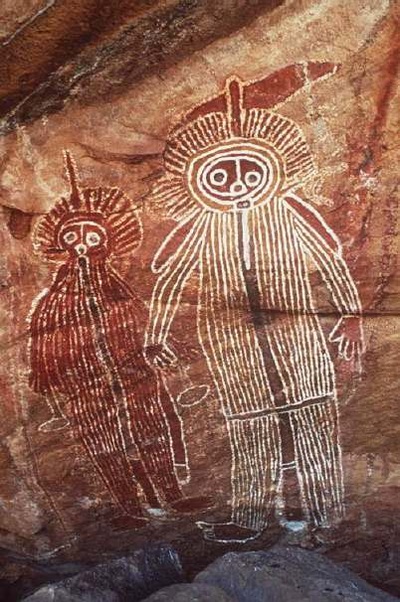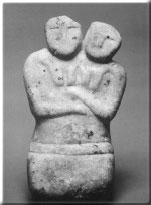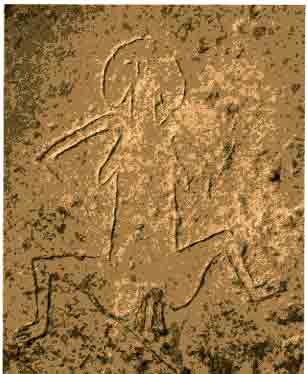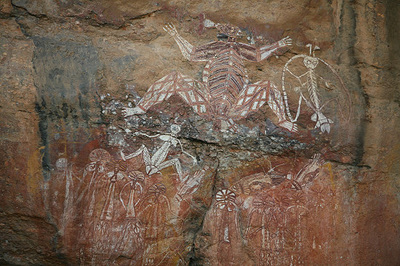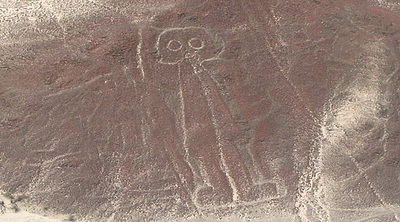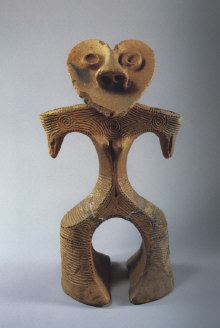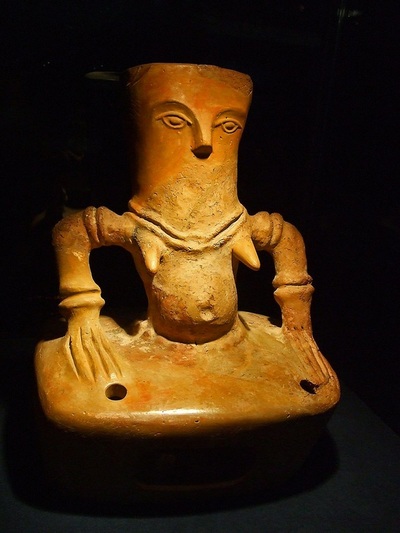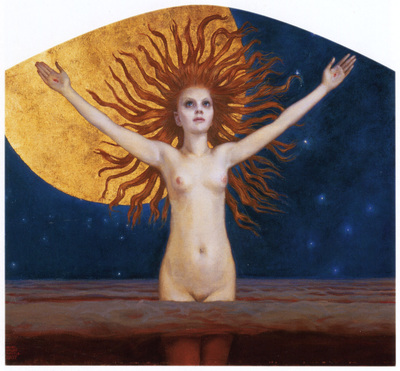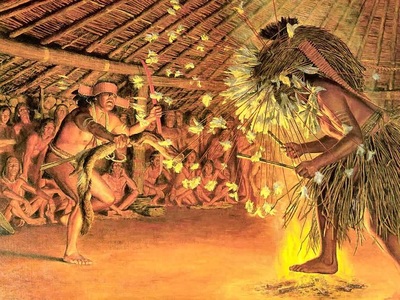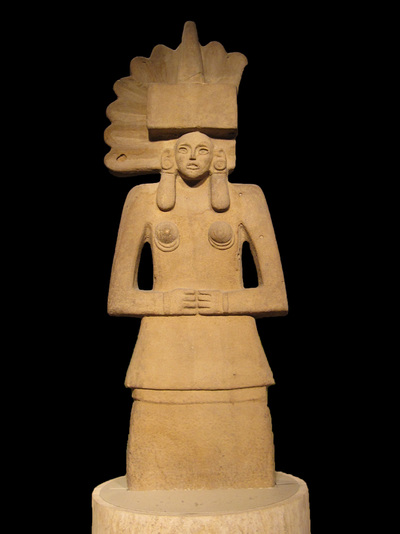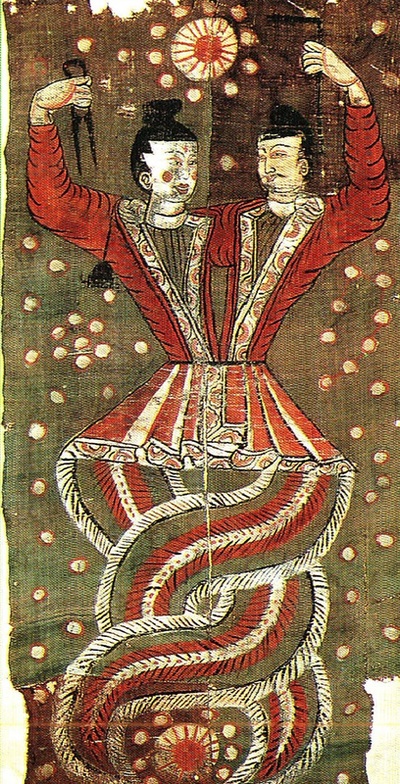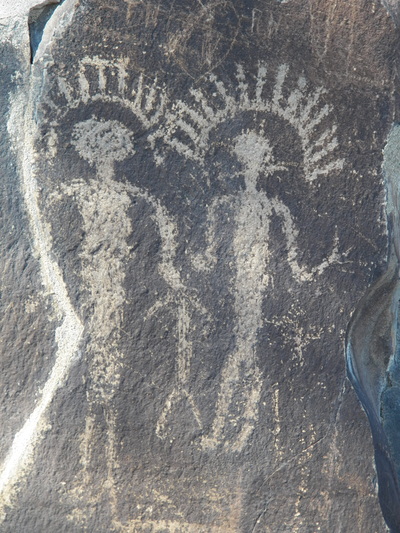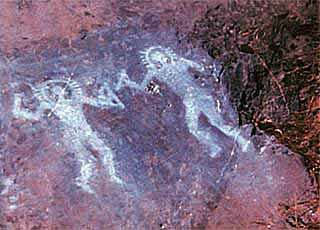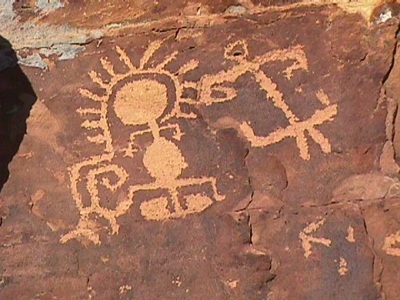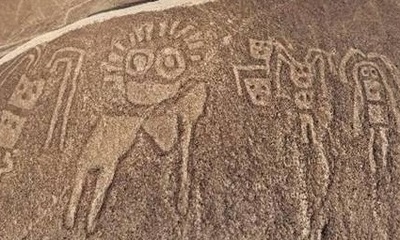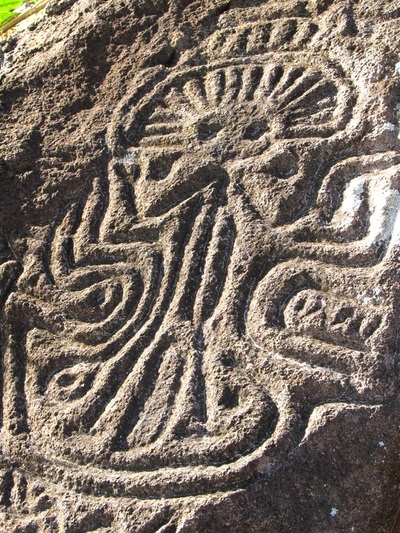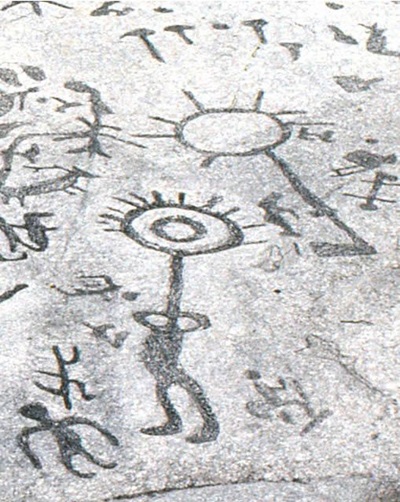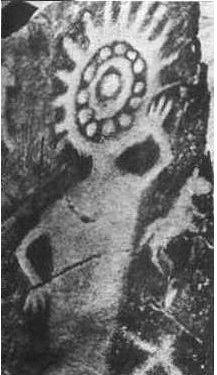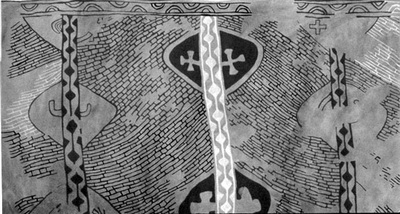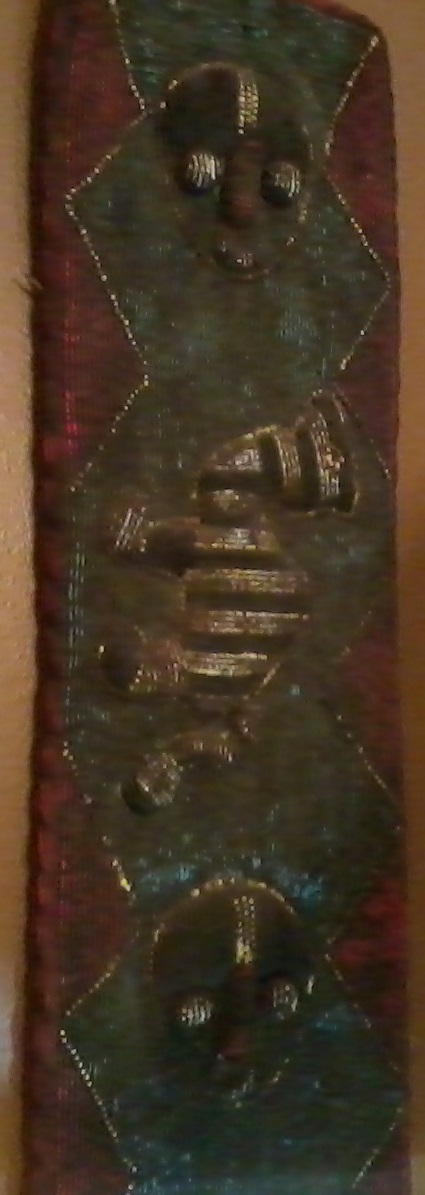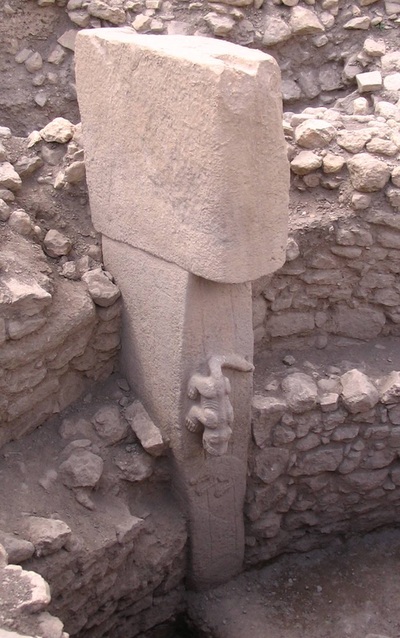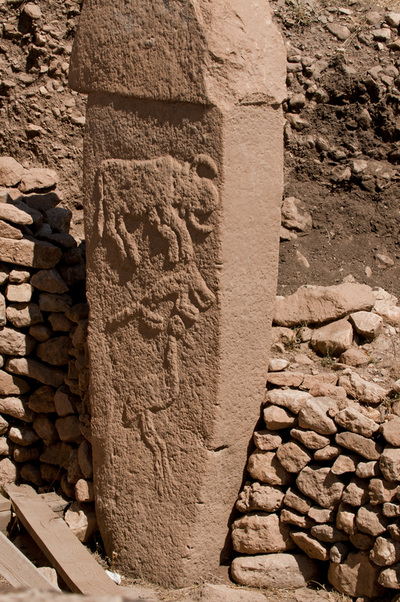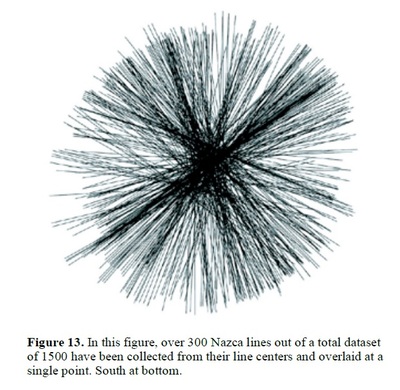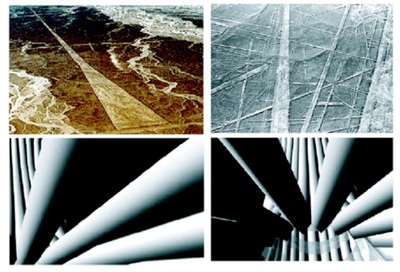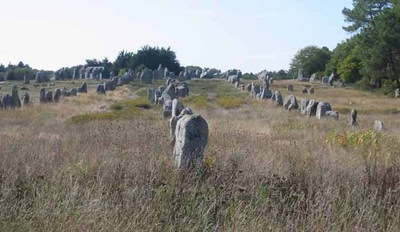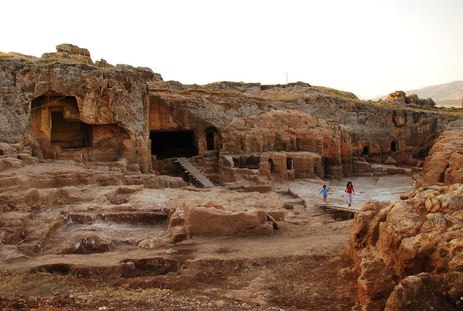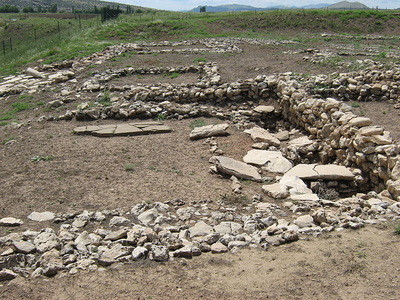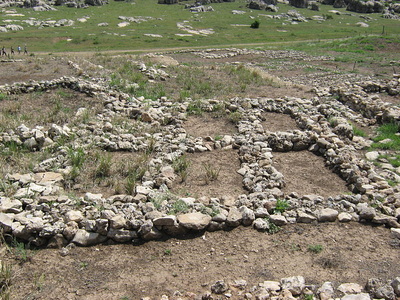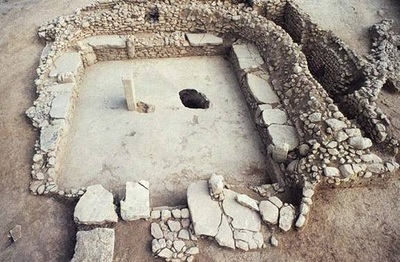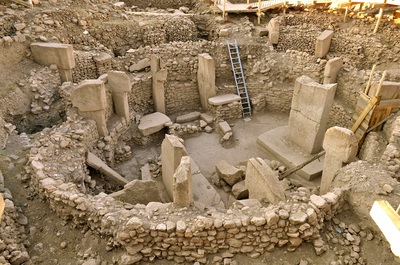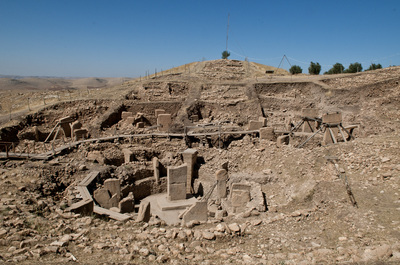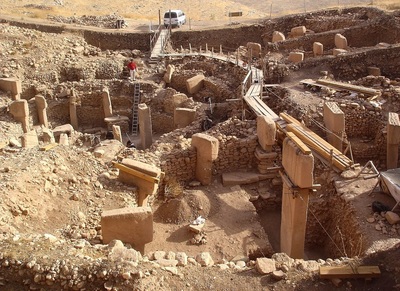- 3 -
c. -10,200 to -9000
Pre-Boreal Mesolithic
|
Video reconstruction looking south
as electron streamers trail away towards the ball plasmoids of the Peratt Column (animation by Richard Smith) |
1. Three Flares of the Peratt Column
|
|
i. Blindingly Bright Ball Plasmoids
a. Genesis 1.3 b. Maori cosmology c. Hawaiian cosmology d. Nazca artifacts e. Göbekli Tepe architecture f. Levantine Neolithic masks g. Ometepe Island head-dressed figures h. Nevalı Çori artifacts i. Columbia River head-dressed faces j. Nazca head-dressed figures k. Anasazi petroglyphs l. Tassili n’Ajjer rock art m. Provincial Park, Ontario petroglyphs n. Land Of Fire o. Muspelheim of the Elder Edda p. Maitryani Upanisad q. “Heart of Earth, Heart of Sky” (Popul Vuh) r. Aboriginal 'Lightning Brothers' Jabaringi & Yagjagbula s. Chinese cosmology: Fu-Xi & Nuva t. Suvannamaccha & Hanuman u. Çayönü two-headed figurines v. Hopi cosmology: Taiowa & Sotuknang w. Nevalı Çori artifacts x. Easter Island duo y. Çatal Höyük two-headed squatters z. Val Camonica duos aa. Columbia River duo bb. Three Fates cc. Triple Goddesses (Gorgons, etc.) dd. Amerindian Possums ee. Mesoamerican: Three Hearth Stones in Southern Sky ff. Los Millares architecture gg. Popul Vuh testimony hh. Ray of Primordial Light differentiates waters of space ii. Standing or Squatting Luminous Humanoid a. Hebrew cosmology: Adam Kadmon b. Jomon Dogu c. Dogon masks d. Dogon architecture e. Cameroon Fang masks f. Chachapoyan textiles g. Moai on Easter Island g. Carajia sarcophagi (Peru) i. Hindu cosmology: Purusha j. Chauvet “Venus” [sic] (?) k. Lepinski Vir figures l. Basque mother goddess: Mari m. Sami mother goddess: Máttaráhkká n. Gaelic mythos: Sheela-na-gig o. Hellenic mythos: Iambe, Baubo p. Ural Mountain cosmology —Shigir Idol q. Huracan / Hunraqan / K’awil (“God K”) r. Nevalı Çori artifacts s. Hua-shan rock paintings (China) t. Zuni Great Kivas petroglyphs u. Val Camonica rock art (Italy) v. "Urfa man" (Anatolia) w. Costa Rica figure x. San Augustin figure (Colombia) y. Göbekli Tepe totem z.Göbekli Tepe mother goddess glyph aa. Ilmatar (”water-mother”) bb. Burrunggui Rock mother goddess cc. Tumba Madžari mother goddess dd. Çatal Höyük squatters ee. Burgos cave art ff. Coatlicue / Cihuacoatl gg. Teteoh nnan / Tocih / Tlalli Iyollo ("Heart of Earth") hh. Tassili n’Ajjer rock art ii. Colombia River petroglyphs & figurines jj. Coso Range petroglyphs kk. Hindu cosmology: Brihadaranyaka Upanisad 4.1 ll. Hindu cosmology: Brihadaranyaka Upanisad 4.6 mm. Amerindian cosmology: Kokopelli [?] nn. Levantine cosmology: Neith oo. Far East Asian cosmology: Archer Yi oo. Hellenic cosmology: Gorgons (Medusa) qq. Chinese cosmology: Fu-Xi & Nuva rr. Semitic cosmology: Neith ss. Aborigine cosmology: “Zig-Zag Devil” tt. Cameroon ancestor dolls uu. Kuksu (”Big Head” or “Earth Initiate”) vv. Oannes (merman) ww. First luminous archangel who sprang from Chaos (Blavatsky) iii. Creator Creature a. Kephre of Egyptian Zep-Tepi (”First Time”) b. Phoenix c. Mesoamerican Turtle d. Çatal Höyük Bear e. Nazca birds f. Çatal Höyük vultures g. Haida Beaver h. Earth Diver i. North American cosmology: Muskrat j. North American cosmology: Duck k. North American cosmology: Turtle |
2. Electron Streamers
|
i. First humans
a. Omaha cosmology b. Aborigine cosmology c. Cameroon ancestor dolls ii. Herds of animals, nomadic caravans a. Basque cosmology - Mari b. Nazca, Peru c. Mesopotamian “fish-man” Oannes d. Göbekli Tepe columns e. Nevalı Çori columns iii. Measuring and mapping a. Vishnu measures the Earth (three times) b. Nazca lines, Peru c. Leylines, old straight tracks d. Standing stone rows & causeways e. Twisted cords at Çatal Höyük f. Ilha do Arvoredo, Brazil petroglyphs g. Tehuelche stones, Patagonia |
|
3. Early Neolithic begins in the East (PPNA)
|
i. Melt complete, southern skies clear
a. Northern glaciation completely gone b. Younger Dryas era concludes in southern hemisphere (c. -9500 to -9000) ii. Dry and cold a. First mixed farming & hunting in Levant b. First cultivation of grains in Anatolia iii. Neolithic proto-sapiens a. Not self-conscious, coordinated instinctual being b. Concentrates energy on well-being and sociability c. Perception, cognition, affection are well coordinated |
4. Early settlements in the Levant (PPNB)
|
i. c. -9600 to -9400
a. Farming & hunting abandoned in the Levant b. Farming from Anatolia & E Europe relocates to Black Sea basin (c. -9600 to -8800) c. Earliest circles at Göbekli Tepe & early phases of Nevalı Çori d. Earliest settlements at Lepenski Vir, Danube (c. -9500 to -7200) ii. c. -9400 to -9200 a. End of extreme dry cold in Levant b. Farming returns to the Levant iii. c. -9200 to -9000 a. Göbekli Tepe settled (layer 3) (c. -9130 to -8800) b. Nevalı Çori settled (?) c. Çayönü settled (?) |
